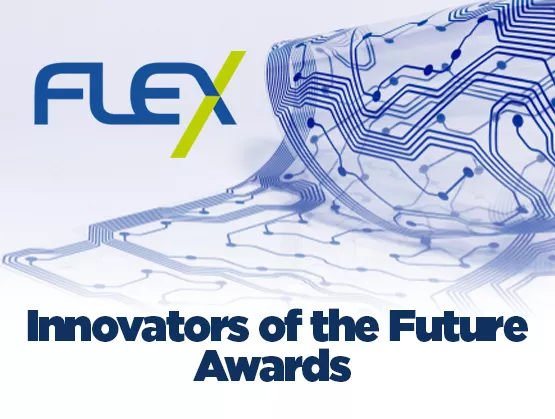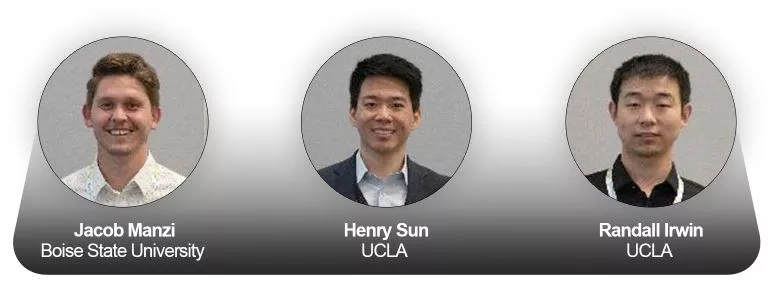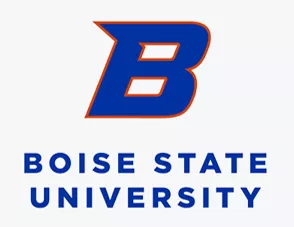
Each year, the Innovators of the Future Awards are a highlight of the FLEX Conference and Exhibition. The competition brings out the best and the brightest in the flexible electronics industry, eager to make a huge difference in the world by re-imagining how flexible technology can be used in a broad range of applications from wearable devices to precision agriculture. It’s no doubt that their ideas will eventually become industry-leading product solutions.
FLEX 2022, co-located with SEMICON West this year, gave new energy to the spirited competition at the July event by inviting students from leading research universities to showcase their ideas for cutting-edge flexible electronics. Awards went to the top three presenters, selected based on their knowledge of the project and ability to clearly present the objective, process and their findings. A panel of experts from industry, government, and academia evaluated the projects during a recorded presentation and a live Q&A session.
2022 Innovators of the Future Award Winners

Jacob Manzi won first prize for his entry titled Plasma-jet based printing and in situ sintering of gold patterns for paper-based flexible electronics.
Henry Sun took second place for his project Flexible quantum dot microLED display enabled by FlexTrate, a fan-out wafer-level packaging technology.
Michael Crump* of the University of Washington and Randall Irwin tied for third place. Crump’s award-winning entry was called Micron-scale electrohydrodynamic inkjet printed conductors for flexible electronics. Irwin won for his project Characterization and reliability of a high bandwidth flexible connector for signal delivery.
To learn more about the poster presentations, visit the FLEX virtual portal.
Meet the Student Researchers
I sat down with Manzi and Sun to hear what attracted them to flexible hybrid electronics research and to discuss their career plans.
Jacob Manzi
Jacob is a third-year Ph.D. candidate at Boise State University. After Lanzi earned a Bachelor of Sciences degree in physics at Northwest Nazarene University, Dr. Harish Subbaraman asked him to join his team at Boise State’s Advanced Nanomaterials and Manufacturing Laboratory to work on plasma jet printing applications. The team secured a grant from NASA to explore how plasma jet printing can be used for space applications.
 Manzi is expecting to graduate from Boise State next year and is exploring career options in the Flexible Hybrid Electronics (FHE) industry. He says the Boise State Ph.D. program opened up a whole new world of polymers and materials for him to investigate. He sees a bright future for himself in FHE and wants to delve into how FHE can be applied to wearable devices with advanced sensing capabilities.
Manzi is expecting to graduate from Boise State next year and is exploring career options in the Flexible Hybrid Electronics (FHE) industry. He says the Boise State Ph.D. program opened up a whole new world of polymers and materials for him to investigate. He sees a bright future for himself in FHE and wants to delve into how FHE can be applied to wearable devices with advanced sensing capabilities.
Manzi is also interested in developing space applications for FHE and perhaps even working at NASA. He presented his work at the International Space Station Research and Development Conference (ISSRDC) in late July in Washington, D.C.
Henry Sun became interested in microelectronics processing while studying for his Master’s degree at Georgia Tech. While planning his career, he met Dr. Subramanian Iyer of UCLA’s Center for Heterogeneous Integration and Performance Scaling (CHIPS), who invited him to join his research group. Sun is a Houston, Texas native and received his undergraduate degree at Texas A&M.
Sun credits his training at UCLA for showing him how to conduct high-quality research. Sun said that good researchers plan carefully and research widely in planning their projects before they begin, which greatly increases their success rate. In his view, 80% of the project should be predictable when the process is clearly thought through before the study is initiated.
 “It’s the 20% unknown part of research where the fun kicks in in research,” Sun said.
“It’s the 20% unknown part of research where the fun kicks in in research,” Sun said.
Sun believes this approach has probably driven the amazing advancements in the size, power and functionality of microelectronics in such a short span of time.
Sun appreciated the chance to meet several company representatives at FLEX and SEMICON West since he is now exploring career opportunities in the semiconductor manufacturing sector. A company’s approach to sustainability is important to Sun as he considers future employers. Companies where he worked as an intern on a number of projects to prevent the release of toxins into the atmosphere inspired him to continue to look ways for more sustainable manufacturing methods.
FHE is a good fit for his plans to contribute to the sustainability of the microelectronics industry.
“It will be great if we can get to the holy grail of fully-organic electronics devices where the whole device will decompose without adding harmful materials to the waste stream,” Sun said.
A big thank you for all our students for participating in the Innovators of the Future Awards competition!
* Not pictured. Unable to attend awards ceremony.
Heidi Hoffman is senior director of Corporate Marketing at SEMI.